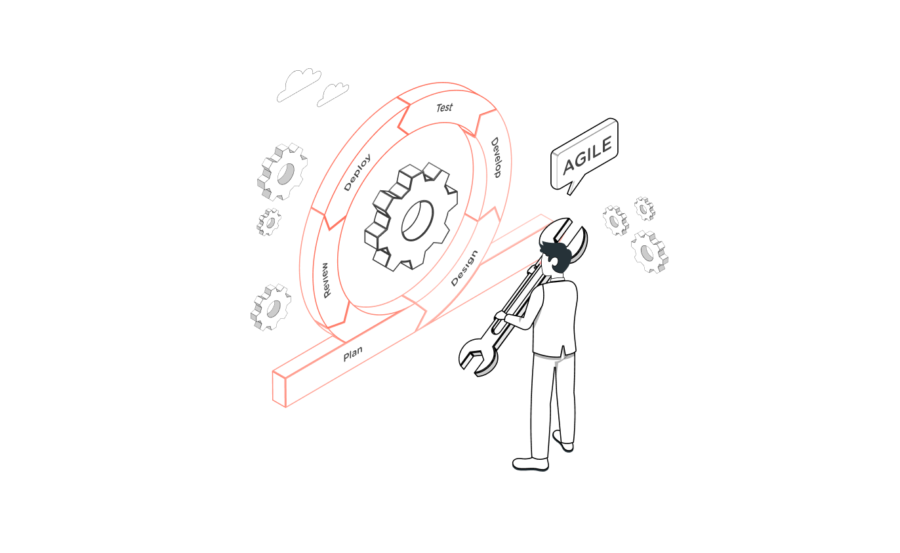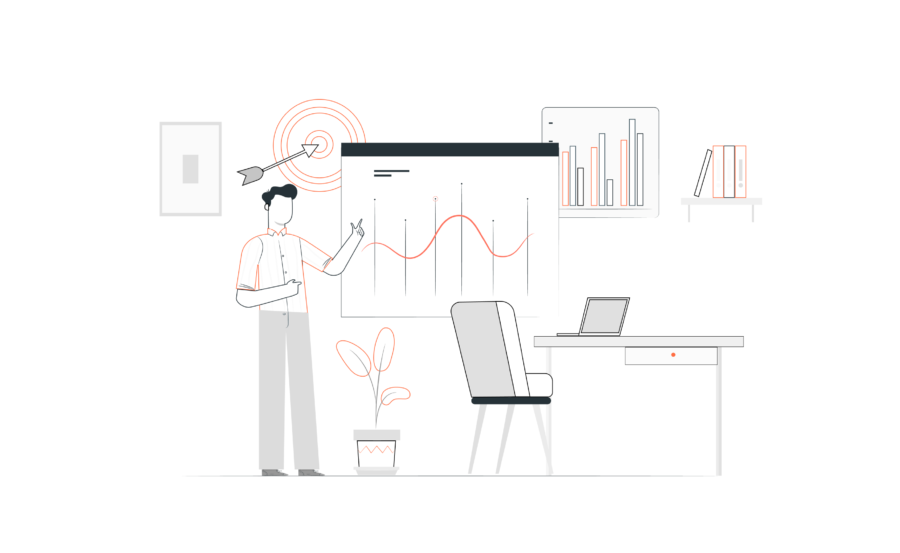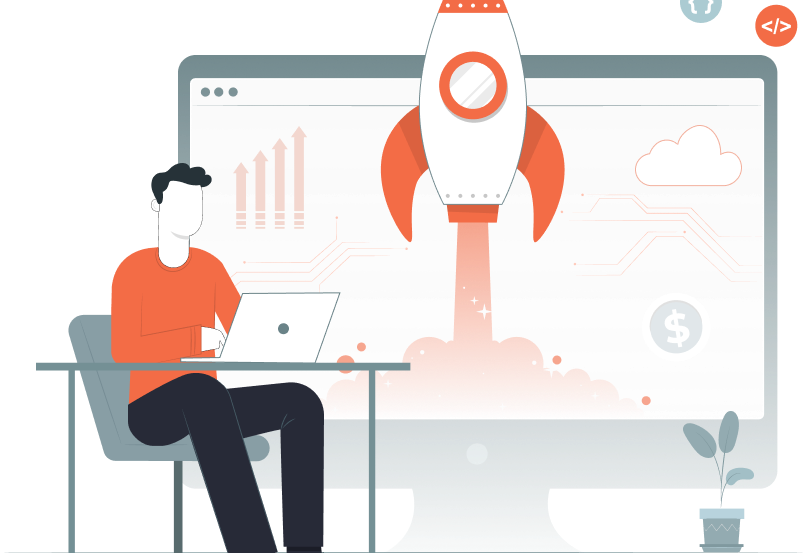The global digital transformation market is aimed to reach 1,548.9 billion dollars by 2027.
Digital transformation is accepted and implemented worldwide as it reduces turnaround time and simplifies different day-to-day processes.
This blog will show you how to reduce business costs through digital transformation.
Let’s get started.
Areas of digital transformation establishment

We all know that the pandemic has disrupted the entire framework of the whole universe. Businesses needed a plan B to survive when the entire world shut down.
The digital transformation came all the way to give life to various sectors and made the processes easier to handle.
Many businesses took to a larger step toward prosperity with the advancement of digital transformation.
How to Reduce Costs Through Digital Transformation
The advent of digital tools eased the long-paced and heavy work. Here are some strategies that help reduce your business costs and increase customer satisfaction.
Cloud hosting and migration

Businesses are adapting to cloud computing extensively to improve their profit scale. The cloud migration services market share is expected to reach 7.09 billion dollars by 2024.
The cloud migration process systematically centralizes the entire business unit into one port for easy data availability.
Access to all pieces of information at one point helps in saving cost and manufacturing time.
Automation tools

Industries are choosing automation to reduce manual workload. Digitalization also supercharges the business with high speed, reliable and efficient results.
The once-doomed market is thriving with automation tools that help lower operational costs. These tools simplify backbreaking work and increase productivity.
The business can also be managed and monitored effectively by automated tools.
Suggested Read : 12 Best AI Tools to Make Your Business Productivity Skyrocket
IoT for uninterrupted workflow
IoT, the Internet of Things, is the biggest tool in maintaining massive data, providing uninterrupted service, and balancing development costs. IoT involves the digital transformation of implementing physical objects with sensors, software, and other technologies. It saves companies many work hours with the help of automation.
Team management tools
Monitoring, discussing, hiring, and training were all done in person during the earlier times, but things have evolved with the dawn of new technologies.
You can screen their work even if you are employing an outsourcing team. Digitalization has provided solutions for all such strenuous tasks.
This digitalization move has benefited both employers and employees, where the expenses spent by both are largely reduced.
Digital transformation has put a period to the physical tracking of employees’ work and reduced the burden on business owners.
Also Read : How to Manage Remote Teams Effectively
Digital Tracking in Shipping and logistics

Digitalization has become the nerve of purchasing, transportation, and shipping services.
Technological tools have knocked off the routine of manual purchase entry, tracking history, and deliveries. The arrival of digital technology into the market taught people smart work rather than the tough grind.
Digital tracking of shipped products and the relevant details are all resolved to centralized operation. This tracking facility helped reduce shipping errors and cost reduction.
Payment and collection facilitation
Imagine waiting to bill your loaded push cart in a long queue with a handful of money to pay at the counter. It’s more like a dream and now we have crossed that.
Bill payment with a single swipe is no more a fancy thing. Purchases and payments are all made quickly through this digital transformation.
The initiation of digital transactions in every sector has reduced time consumption and promoted cost-saving.
Benefits of digital transformation
Digital transformation has set a tremendous mark in the market with its rich benefits. Here is how digital transformation helped various businesses expand.
Resource management | Companies’ systems have transformed to a new pace with the introduction of digital tools. Digital-powered solutions have introduced the easiest way to manage resources replacing the old legacy system.Digitalization has primarily reduced the consumption of resources in large amounts. For example, billing and online banking apps have limited manual paperwork and migrated to online data feeding. |
Improved consumer engagement | Advanced digital technologies are actively producing quick resolutions and deliveries. Personalized experiences are provided by enabling 24-hour customer service. Automation ensures a smooth user experience with faster solutions. |
Innovative approach | Manual labor is replaced by digital tools, reducing strain on humans and saving costs. Productivity is increased as the time consumed is reduced. One-time installation of tools reduces management difficulty. |
Quick reach to customers | Manual labor is replaced by digital tools, reducing strain on humans and saving costs. Productivity is increased as the time consumed is reduced.One-time installation of tools reduces management difficulty. |
Saving revenue | Digital tools have improved the relationship between the business and customers. The appropriate resources produce highly efficient output, resulting in an enhanced customer experience. |
Read More : 5 Ways Your Startup Can Leverage Digital Transformation
Impacts of digital transformation
- Revenue savings
- Reduced operational costs
- Optimized operation
- Improved customer experience
- Reduced team burden
How do digital transformation services help in cost reduction?
Digitalization in business minimizes production charges and saves them from possible financial risks.
Here are a few ways digital transformation services can reduce your business costs.

- Reduces manual workload
Digitalization significantly minimizes the workload performed by people. Repetitive and monotonous operations are digitally automated, allowing individuals to focus on more complicated tasks.
When digitalization replaces human labor, it does not imply that it is being duplicated. It only does recurring tasks, and automation minimizes the quantity of human labor.
- Error reduction
A single miscalculation can cause significant damage to machines, putting people in danger.
Digital technology has the potential to significantly minimize mistakes in areas such as healthcare, aviation, and other technical fields where a single error may result in significant harm.
Though humans assist them, automation implemented in jobs minimizes the effort done by humans. It is also less prone to errors.
- Prototyping is simplified
Product development involves several developmental phases. The entire process may be significantly shortened by using digital technologies throughout the procedure, including augmented reality and digital twins.
In addition to product visualization, digital twins provide analysis of future behavior and performance. Designers can examine their characteristics more realistically using digital models.
- Predictive maintenance
Sensors used in digital transformation solutions monitor the functioning of the equipment to discover delays or malfunctions during the process.
These predictions help minimize possible shutdowns due to faults and increase process continuity, reducing breakdown losses.
- Deducting operating expenses
Leveraging the potential of digital transformation services can dramatically cut operational expenses, such as training costs and time spent on manual paperwork.
Switching to cloud computing from your servers may drastically cut maintenance costs by allowing you to store vast volumes of data. The size of the cloud servers determines the price and it is possible to shrink the size if necessary.
- Integrating with cloud computing
It is predicted that 200 ZB of data will be stored in the cloud by 2025, with the cloud currently storing 50% of the world’s corporate data.
Companies are shifting from traditional infrastructure management to data feeding into the cloud environment.
Cloud hosting allows the entire business to be centralized, with every piece of information available and accessible to everyone, reducing costs and time.
- Automation tools
Automation tools are popular among businesses of all sizes and scales because they reduce operational costs. You can reduce workloads and routine tasks with automation while increasing productivity.
- IoT for maintenance
IoT reduces expenses by prioritizing and optimizing supplies, revenue management, manufacturing, operating procedures, and energy management.
IoT is the most crucial source of predictive maintenance, 5G, and big data, which reduces disruptions and overall development costs. Learn more about the importance of IoT in startup growth here.
- Team management tools
Team management tools help monitor employees and the overall business flow. It aids in the management of assigned tasks and the status of the project. These tools are capable of keeping track of all activities.
- Supply chain management
Digital tracking of shipping and logistics saves time and eliminates the need for manual labor previously required in conventional trading. On-time updates ensure efficient tracking while saving time.
Can digital maturity help in saving costs?
A digitally mature business can deliver a better customer experience than its non-digital competitors.
It strengthens the rapport between businesses and customers through creative strategy and marketing. The costs spent on routine and unproductive work are routed to digital tasks.
How can NeoITO provide digital transformation support?
NeoITO has expertise in building immersive digital experiences that scale businesses faster. We assist businesses in transforming their traditional processes into digitally powered solutions.
We have an expert team to deal with your business digitalization requirements. Contact us now to take full advantage of digital transformation.






